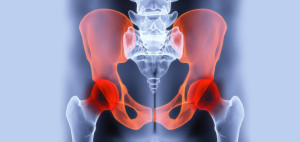While chronic pelvic pain is prevalent in women, it is often under diagnosed and inadequately treated. The differential diagnosis and the role of pelvic floor physical therapy are key factors in the successful treatment of the many types of chronic pelvic pain.
Q: Is zero pain an achievable goal in the treatment of chronic pelvic pain?
Dr. Fitzgerald: Women should be extremely hopeful that with a multi-disciplinary approach, we can significantly reduce their pain and improve functioning. In fact, functional measures might be a better way to increase our success in the treatment of chronic pelvic pain.
I tell patients that zero pain may not be achievable, but if we can significantly reduce the pain level by 50% to 75% and improve functioning to 90%, then that is a win. Patients may have periodic flares, and we educate them on ways to quickly get out of that flare. But I am hopeful that, someday, we’ll have a treatment that will get patients to zero pain.
Q: What gaps in knowledge on chronic pelvic pain do you hope future studies will uncover?
Dr. Fitzgerald: Pelvic pain traditionally has been thought of as an organ-based diagnosis (ie, a problem with the uterus, ovaries, or bladder). Moving away from that way of thinking, we are examining how the nervous system, both peripherally and centrally, and the musculoskeletal system influence chronic pelvic pain.
In addition, research is focusing on how to improve the diagnosis of chronic pelvic pain conditions through quantitative sensory testing of the pelvis, objective measures of the pelvic floor muscles, and functional brain imaging. Preliminary data suggests that we may be able to use neuroimaging biomarkers to predict which patients with acute conditions will develop chronic pelvic pain.
Last Updated 03/06/2017
Continue reading the full article from Practical Pain Management here


